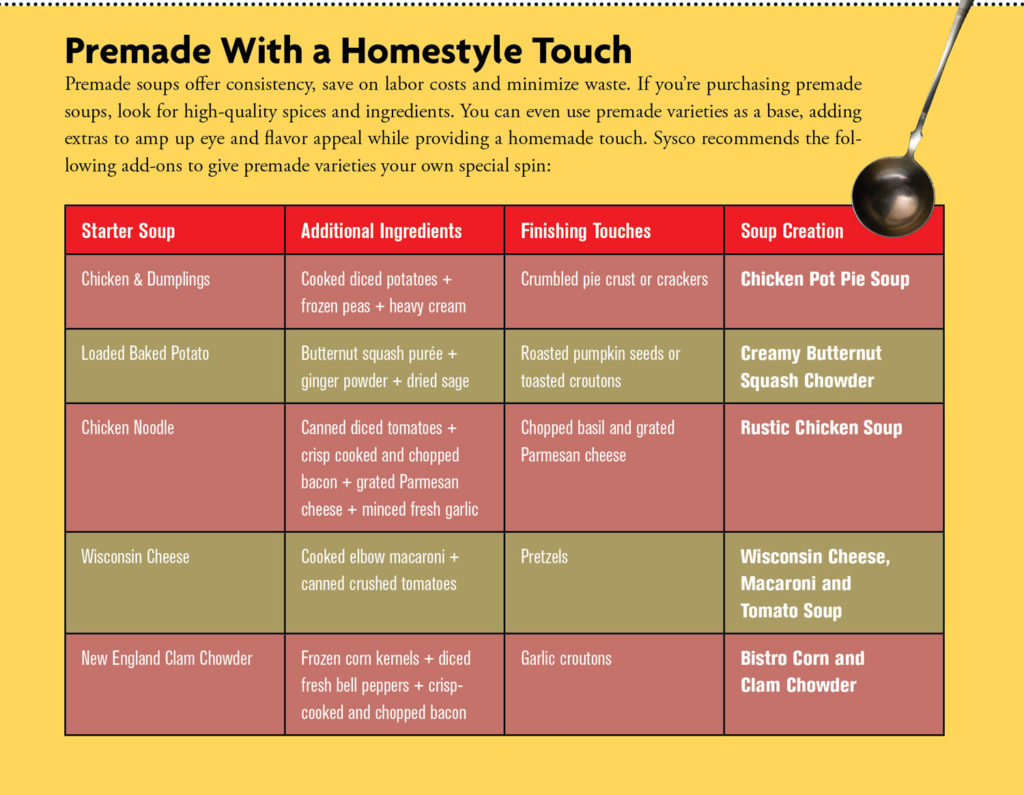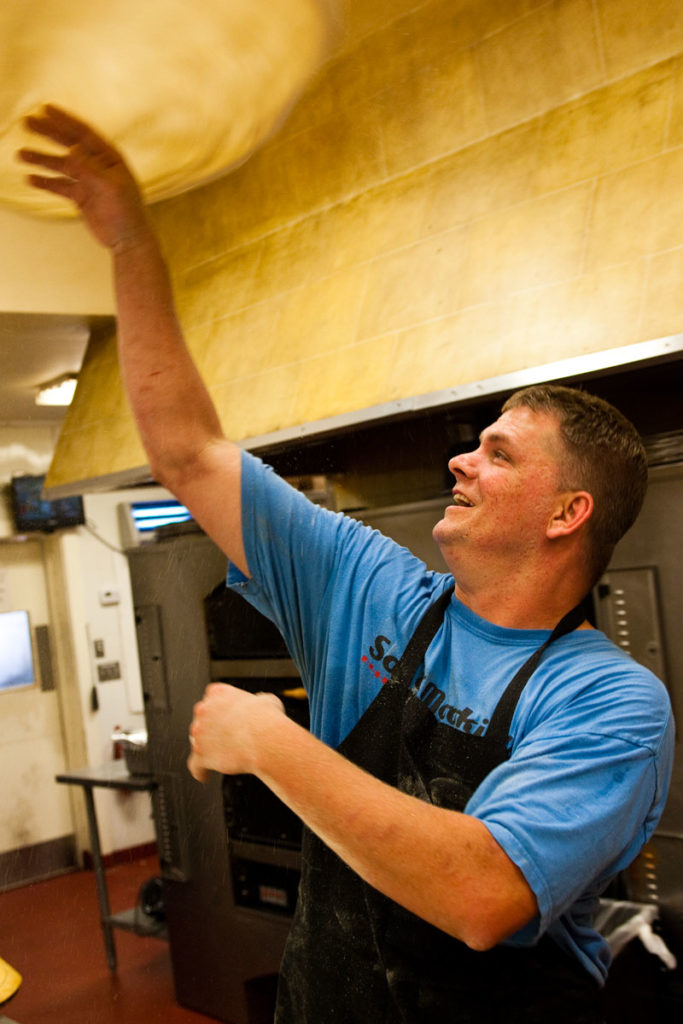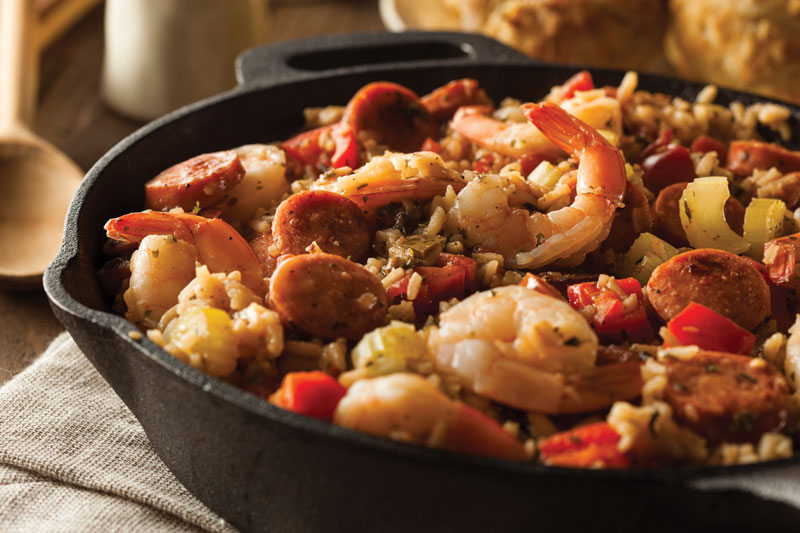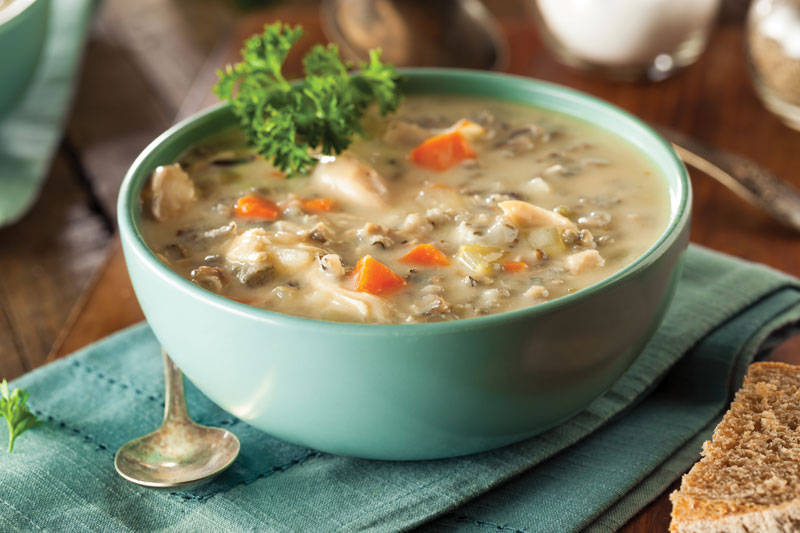When the weather cools and customers are looking to warm their bones, a hearty, comforting soup fits the bill like nothing else. According to foodservice giant Sysco, soup has surpassed salad as the leading appetizer in limited-service restaurants; served before a meal or as a side dish or entrée, about 60% of customers order soup at least occasionally during restaurant visits. The company also reports adding soup to the menu can boost check averages by up to 15%, while soups can boast a 60% profit margin. Even better, the category is expected to grow 5% or more in the coming years.
Entire empires have been built around this humble category: Remember Seinfeld’s Soup Nazi screaming, “No soup for you”? His inspiration was borne of legendary New York City soup guru Al Yeganeh, whose company is still going strong. “Customer satisfaction and repeat sales are key, but it takes a lot of trial and error to create the right recipes that your customers will love and crave again,” explains Seb Rametta, founder of The Original SoupMan, based in Staten Island, New York. “With the patience, love and culinary skills of Al Yeganeh at our original store, customers have been lining up since 1984 to enjoy a bowl of our soups, which were voted best of New York and Zagat-rated thanks to slow-cooking in small-batch kettles.”
Best of all, whether you whip up recipes from scratch or purchase premade varieties, soups are also a natural addition to the pizzeria menu.

Favorite Flavors
Like any menu item, soups have evolved with changing consumer tastes, but many flavors have stood the test of time. Rametta’s company regularly makes more than 50 soups, including lobster bisque, jambalaya, crab corn chowder, mulligatawny, chicken vegetable, eggplant Parmigiana, butternut squash and mushroom barley. For pizzerias, he recommends standbys like minestrone, Italian wedding, pasta fagioli, lentil soup or chicken noodle.
 |
|
Corporate chef Jon Pixler creates winning soup varieties from scratch, working in-season to keep costs down. |
At Sal & Mookie’s New York Pizza & Ice Cream Joint in Jackson, Mississippi, soups of the day are created from scratch, part of the company’s commitment to wholesome, handcrafted fare. “We always use the freshest ingredients we can find,” says Jon Pixler, corporate chef for Mangia Bene, the three-restaurant operation that owns Sal & Mookie’s. “That’s our philosophy, and we find it’s absolutely cheaper to prepare them from scratch. We might make tomato-basil soup, with fresh San Marzano tomatoes, vinegar, sugar, basil and cream, and get a really great food cost percentage from that, or we might make a seafood gumbo, which has a higher food cost. So we try to mix it up.” Both demand and seasonality also factor in when adding a soup of the day to the menu, Pixler notes. Working with in-season produce that’s available in abundance helps keep costs down.
You can also look to world flavors to inspire your soup selection. Consumers are looking for ethnic-inspired options: Thai and Chinese are popular favorites, with Latin and Indian flavors gaining ground. Pixler rotates recipes for his batched soups—including customer favorites the company repeatedly returns to—and finds that tomato-basil, beer-and-cheese (incorporating Fat Tire amber ale and smoked Gouda), bean with spicy Italian sausage, roasted pepper Florentine, and black bean are popular varieties.
|
CLASSIC COMBOS |
| Don’t forget to offer easy combos for your customers—they’re perfect for the lunch crowd. Bundle up a soup with a slice, sandwich or salad for a complete meal that’s served pronto. “A soup and sandwich is classic, and soup with a slice of pizza is a natural,” says Seb Rametta, founder of The Original SoupMan, based in Staten Island, New York. “Combos make great meals, and the customer enjoys more variety, while soup has a healthy halo as a good-for-you food. Try serving Italian wedding, tomato basil, chicken noodle, chicken gumbo, or any seafood soup in 8-ounce cups or bowls with a half sandwich or slice of pizza. We’d also suggest soup as a perfect add-on to two slices and a soda!” |
Some customers, in fact, may find that soup not only makes the meal—it is the meal. “We make the best seafood soups—Lobster Bisque, Crab Corn Chowder, Shrimp Bisque and Jambalaya—and everything is unique, hearty, and rich, so they’re meals unto themselves,” Rametta notes. “Lobster Bisque is by far our bestseller. Generally, today’s consumers want clean labels with ingredients that are good for you and soups that deliver bold flavor with unique spices. It’s also important that your customers trust that you actually put the ingredients you promise in the soup, like real lobster in a bisque.”
The Science of Selling
When marketing your soups, think outside the bowl. Sysco reports that soup flights— i.e., serving a variety of soups together in small samplings—are a newer trend and gaining traction. “A recent survey showed that more customers would order soup if the selection was better,” the company reports. “Consumers also love unique presentation styles, so get creative with the type of containers you use to command a higher price point. Try serving three 2-ounce portions of soup in a flight instead of one 6-ounce bowl to gain incremental profits.”
The Sal & Mookie’s website promotes its daily specials, while signage outside the entrance promotes soups and slices of the day for lunch patrons. Meanwhile, an app for online ordering lists the soup of the day for real-time info at the touch of a button. “We sell more soup at lunch, because we do a lot of sandwiches and slices with a side at this time,” Pixler says. “Soup sales are stronger from early fall to late spring. But during the summer, when it’s hot out, we’ll do cold soups as well—gazpacho or shrimp and cucumber, for example.” And because everything is made from scratch, he finds customers are willing to pay more.
 |
|
Popular dishes like jambalaya can inspire a plethora of soup ideas for operators, while offering customers familiar flavor profiles. |
|
Play On Words |
| According to Statista, a recent survey revealed that U.S. consumers are most concerned about price when they purchase a soup. But the second most important product attribute was natural ingredients, and 40% indicated they are more likely to purchase or willing to pay more for a soup if it’s labeled as “premium.” Label your soups accordingly to cash in on these customer demands, and watch your soup sales soar! |
Don’t forget to spread the word on social media: Post drool-worthy pictures of your soups on Facebook or Instagram to summon customers for simmering goodness when the weather turns chilly. When shooting photos, try using a clean, unfussy background (white bowls, for example) and adding color and texture with fresh garnishes. And make sure they’re also served to look their best in-house. “We keep it classic. Whatever is in the soup, we garnish with those ingredients,” Pixler says. “Every cup of soup has a garnish, because customers eat with their eyes first.” That attention to detail and smart promoting are paying off; in winter, staff at Sal & Mookie’s can sell through a five-gallon batch of soup in just a couple of days.
Finally, Sysco adds that waitstaff can be crucial for selling more soups. Make sure servers mention the soup of the day and offer a small sample or taster to every customer. Train your waitstaff to ask customers if they would like to start off with a bowl of soup, and teach them to describe the varieties available, using key sensory phrases like salty, sweet, smooth, etc. Finally, ensure the bowl is free of drips for a flawless presentation. With top-notch recipes and a multipronged approach to soup selling, you can count on impressive liquid profits!















